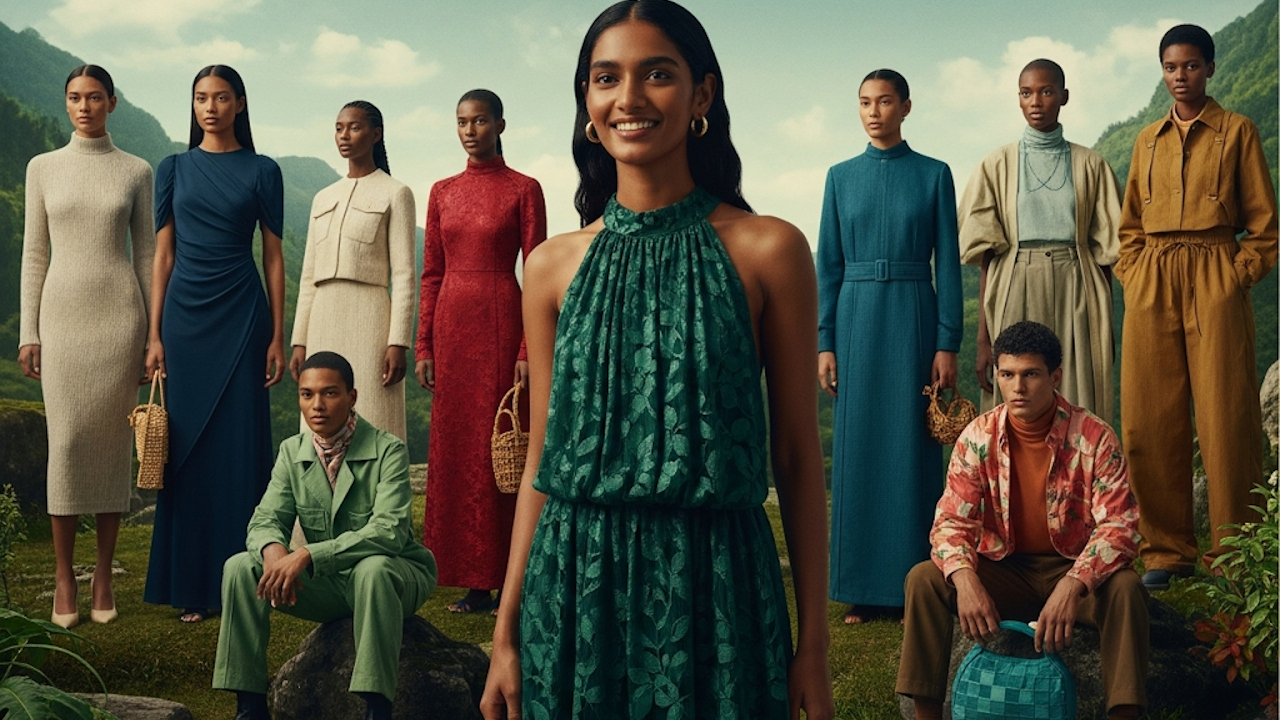In recent years, the fashion industry has undergone a significant transformation. Once criticized for its heavy carbon footprint, reliance on cheap labor, and overproduction, the industry is now shifting toward more sustainable practices. As we move through 2025, sustainable fashion has evolved from a niche movement into a vital part of the global fashion landscape. Eco-friendly brands are leading the charge by rethinking every aspect of design, manufacturing, distribution, and even marketing. These companies are proving that fashion can be beautiful, functional, and environmentally responsible.
Sustainable fashion in 2025 is characterized by innovation, transparency, and circularity. Consumers are more educated and conscious about the impact their purchasing decisions have on the planet. With social media, documentaries, and activist campaigns highlighting issues such as water pollution, textile waste, and worker exploitation, people are demanding more from the brands they support. The result is a thriving ecosystem of eco-conscious fashion brands that are committed to minimizing harm and maximizing ethical value.
One of the leading names in sustainable fashion today is Patagonia. Known for its long-standing commitment to environmental responsibility, Patagonia has been a pioneer in the movement. In 2025, the company continues to innovate by using 100% recycled or organic materials and by offering repair services to extend the life of its products. Its Worn Wear program, which encourages customers to trade in and buy used clothing, has grown significantly and serves as a model for other brands aiming to embrace circular fashion.
Another brand making waves is Eileen Fisher. With a mission rooted in simplicity, timelessness, and sustainability, Eileen Fisher focuses on using organic and responsibly sourced fabrics. The company has invested heavily in regenerative agriculture and now sources wool from farms that not only avoid environmental harm but actively restore the ecosystem. Eileen Fisher also operates a take-back program, allowing customers to return used items so they can be resold, remade, or recycled into new garments.
Stella McCartney, a long-time advocate for cruelty-free and sustainable fashion, remains at the forefront of innovation in 2025. The brand has embraced lab-grown leather, biodegradable synthetics, and advanced dyeing techniques that significantly reduce water usage. McCartney has also collaborated with scientists and tech companies to develop new materials that mimic the feel and durability of traditional fabrics without the environmental cost.
Smaller, emerging labels are also contributing meaningfully to the shift toward sustainable fashion. Brands like Pangaia and Reformation are pushing boundaries with both design and sustainability. Pangaia, for example, uses bio-based fibers, botanical dyes, and packaging made from recycled materials. Its garments often feature educational text that informs consumers about the environmental innovations used in the product. Reformation, on the other hand, focuses on creating stylish, feminine pieces while maintaining a transparent supply chain. It publishes sustainability reports and offers detailed information on the environmental footprint of each product on its website.
Technological advancements have played a huge role in helping brands become more eco-friendly. In 2025, AI and machine learning are used to optimize inventory and reduce waste by predicting customer demand more accurately. 3D printing and virtual sampling have significantly cut down on fabric waste during the design and prototyping stages. Furthermore, blockchain technology is being utilized to create transparent supply chains that consumers can trace from farm to closet.
In addition to environmental efforts, social sustainability has also become a major focus. Many eco-friendly brands are taking steps to ensure fair wages, safe working conditions, and community development in the areas where they operate. Brands like People Tree and TenTree prioritize ethical labor practices alongside their environmental commitments. TenTree, for instance, plants ten trees for every item sold and works with communities worldwide to support reforestation and sustainable livelihoods.
Consumer habits have also evolved. The rise of the “buy less, buy better” mindset means that people are investing in high-quality pieces that last longer instead of chasing fast fashion trends. Rental services and clothing swaps are becoming more popular, especially among younger generations who are more likely to experiment with sustainable living. Online platforms for secondhand fashion, such as ThredUp and Depop, are booming in popularity, providing consumers with eco-conscious alternatives to traditional retail.
Governments and policymakers are beginning to play a role in encouraging sustainable practices as well. Some countries have introduced incentives for companies that adopt environmentally friendly practices, while others are implementing stricter regulations on waste management and emissions. As legislation catches up with public demand, brands that have already prioritized sustainability are well-positioned to thrive.
Despite the progress, challenges remain. Greenwashing continues to be a concern, as some brands exaggerate or falsely claim eco-friendly practices to attract conscious consumers. Transparency, third-party certifications, and consumer education are critical to maintaining trust and holding companies accountable.
As we look ahead, the fashion industry of 2025 offers a promising glimpse of a future where style and sustainability go hand in hand. Eco-friendly brands are not just making clothing. They are building movements, changing narratives, and inspiring individuals to consider the broader impact of their choices. Sustainable fashion is no longer just an alternative. It is becoming the standard, setting the stage for a more responsible and regenerative industry that respects both people and the planet.

